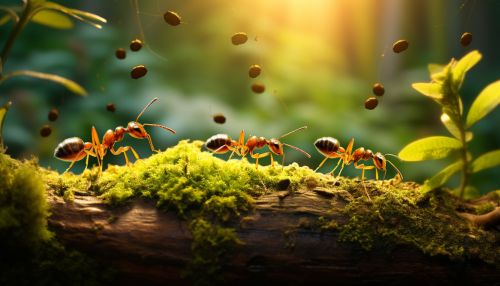Biological Mechanisms of Animal Social Behavior
Introduction
Animal social behavior represents a complex field of study within biology, focusing on the interactions and relationships among animals of the same species. It encompasses a wide range of behaviors, including communication, cooperation, conflict, and mating strategies. The biological mechanisms behind these behaviors are diverse and often intricate, involving genetic, hormonal, and neural components.


Genetic Basis of Social Behavior
The genetic basis of social behavior in animals is a fundamental aspect of the biological mechanisms involved. It is widely accepted that genes play a significant role in shaping the social behaviors of animals. This is evident in the consistent patterns of behavior observed within species and among closely related species. The field of behavioral genetics has provided substantial evidence supporting the genetic basis of social behavior.
The study of eusociality, a high level of organization of animal sociality, provides compelling evidence of the genetic basis of social behavior. Eusocial animals, such as ants, bees, and some species of birds and mammals, exhibit complex social structures characterized by cooperative brood care, overlapping generations, and a division of labor. The genetic basis of eusociality has been extensively studied, revealing that certain genes are associated with specific social behaviors.


Hormonal Influence on Social Behavior
Hormones are another crucial biological mechanism influencing animal social behavior. They act as chemical messengers, transmitting information between different parts of an organism's body. Hormones can influence a wide range of behaviors, including aggression, mating, parental care, and social bonding.
The role of oxytocin and vasopressin in social behavior has been extensively studied. These hormones are known to influence social bonding, maternal behavior, and pair bonding in various animal species. Similarly, the hormone cortisol is associated with stress responses and can influence social behavior by modulating reactions to stressful social situations.


Neural Mechanisms of Social Behavior
The neural mechanisms of social behavior involve the ways in which the brain processes and responds to social information. These mechanisms are complex and involve multiple brain regions and neural circuits. The amygdala, hypothalamus, and prefrontal cortex are among the key brain regions involved in social behavior.
The amygdala plays a crucial role in processing emotional responses and is involved in behaviors such as aggression and fear responses. The hypothalamus is involved in a variety of behaviors, including mating, aggression, and social hierarchy establishment. The prefrontal cortex plays a role in social decision-making and understanding the intentions of others.


Evolution of Social Behavior
The evolution of social behavior in animals is a topic of great interest in the field of evolutionary biology. The kin selection theory, proposed by W.D. Hamilton, suggests that animals are more likely to exhibit social behaviors that benefit their relatives, thereby increasing the chances of their genes being passed on to future generations.
Another influential theory is the reciprocal altruism theory, which proposes that animals may act altruistically towards others with the expectation that the favor will be returned in the future. This theory is often used to explain cooperation among unrelated individuals.


Conclusion
The biological mechanisms of animal social behavior are multifaceted, involving genetic, hormonal, and neural components. Understanding these mechanisms provides insight into the complex social structures and behaviors observed in the animal kingdom. Further research in this field promises to deepen our understanding of animal behavior and may also shed light on the biological underpinnings of human social behavior.
